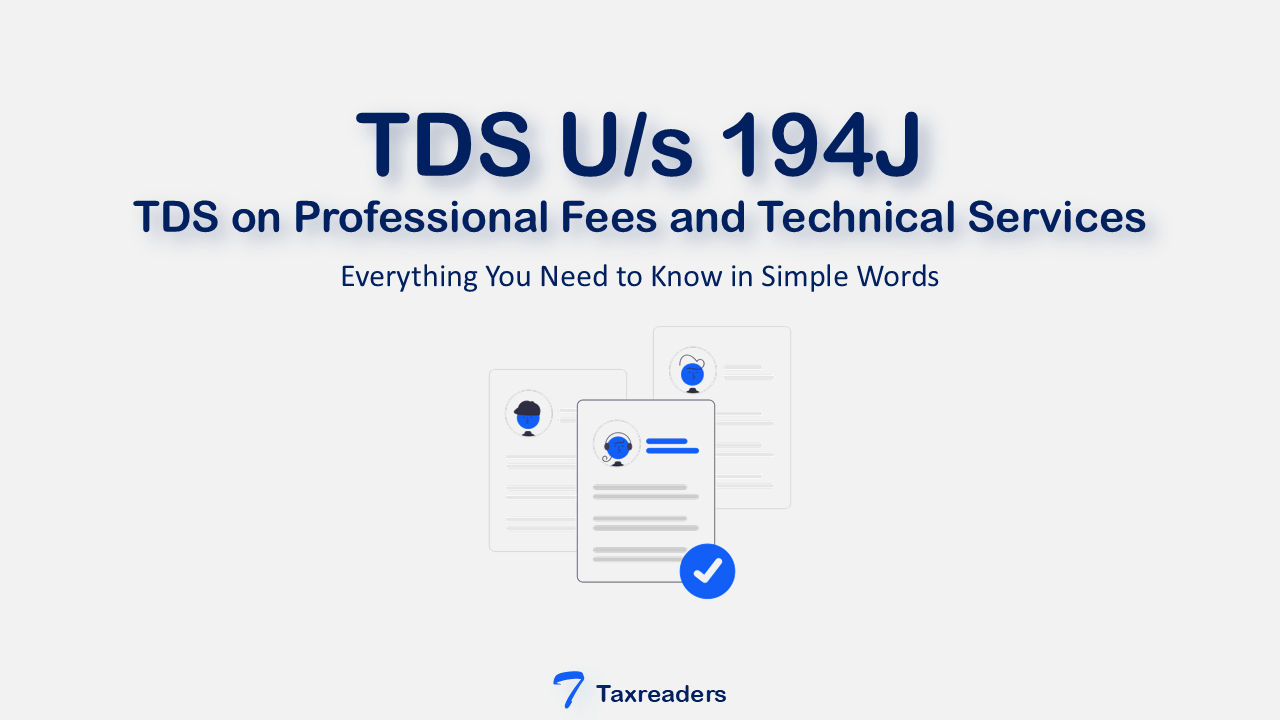{tocify} $title={Table of Contents}
TDS Under Section 194J – Everything You Need to Know in Simple Words
In this article, we’ll explain TDS under Section 194J in a way that’s easy to understand. No confusing tax jargon—just clear, straight-to-the-point information that helps you stay compliant and avoid penalties.
What is TDS Under Section 194J?
TDS (Tax Deducted at Source) under Section 194J applies when payments are made for professional services, technical services, royalties, or non-compete fees. If you're making these payments to a resident in India, you may be required to deduct tax at the time of payment or credit, whichever is earlier.
Who Needs to Deduct TDS Under Section 194J?
Any person (individual, company, partnership firm, HUF, etc.)—except individuals and HUFs who are not required to get their accounts audited—must deduct TDS under Section 194J when they make specific payments listed below.
Payments Covered Under Section 194J
- Professional FeesPayments to doctors, lawyers, architects, CA, consultants, designers, engineers, etc.
- Technical FeesCharges for technical services like software maintenance, IT support, systems design, etc.
- RoyaltyPayments for use of copyrights, patents, trademarks, or similar intellectual property.
- Non-Compete FeesPayments made to someone for not starting or running a competing business.
- Remuneration to DirectorsAny fee (other than salary) paid to a company’s director (e.g., sitting fees).
TDS Rates Under Section 194J
| Nature of Payment | TDS Rate |
|---|---|
| Professional Services | 10% |
| Technical Services | 2% |
| Royalty (general) | 10% |
| Royalty (for films, etc.) | 2% |
| Non-Compete Fees | 10% |
| Director’s Remuneration | 10% |
Note: If the recipient doesn’t provide a PAN, TDS is deducted at 20%.
TDS Threshold Limit Under Section 194J
TDS under Section 194J is applicable only if the total payment during the financial year exceeds ₹50,000 to a particular person under each category. So, if you pay ₹25,000 as professional fees and ₹20,000 as royalty to the same person, TDS is not applicable since neither payment crosses ₹50,000 individually.
When Should You Deduct TDS?
- At the time of crediting the payment to the recipient’s account, or
- At the time of actual payment,
whichever is earlier.
For example, if you record a consultancy invoice in your books on 20th April and pay it on 5th May, TDS must be deducted on 20th April.
Due Dates for TDS Payment and Return
- Deposit TDS: By the 7th of the following month.
- TDS Return Filing (Form 26Q):
- Q1 (Apr–Jun): 31st July
- Q2 (Jul–Sep): 31st Oct
- Q3 (Oct–Dec): 31st Jan
- Q4 (Jan–Mar): 31st May
- TDS Certificate (Form 16A): To be issued quarterly within 15 days of the due date of filing return.
Penalty for Non-Deduction or Late Deduction
- You may have to pay interest:
- 1% per month for non-deduction
- 1.5% per month for late payment after deduction
- You may be disallowed from claiming the expense while computing your income.
Practical Examples
FAQs on TDS Under Section 194J
What is the TDS rate under Section 194J?
Is TDS under Section 194J applicable to freelancers?
What is the minimum amount for TDS under Section 194J?
Can individuals deduct TDS under Section 194J?
Is GST included while calculating TDS under Section 194J?
Which form is used to file TDS returns for Section 194J?
Final Thoughts
Understanding TDS under Section 194J is essential if you’re paying for professional or technical services. It’s not just about deducting the right amount, but also about deducting and depositing it on time to avoid penalties. Whether you’re a business owner or a freelancer, staying informed will help you save money, stay compliant, and focus on growing your work stress-free.
For more updates on TDS, GST, and other tax-related tips, stay connected to our blog.

.png)
.png)
.png)